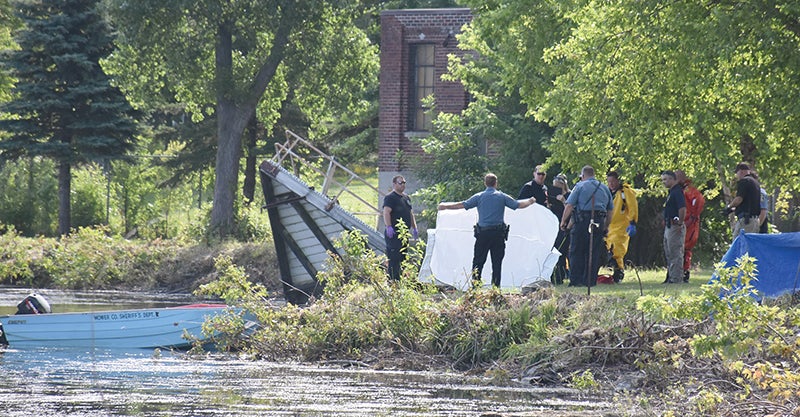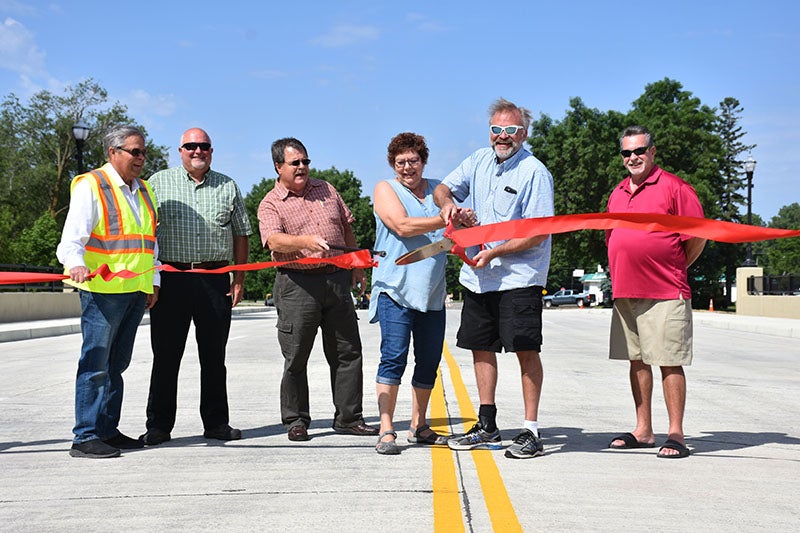Series of projects aim to improve waters
Published 6:30 am Monday, June 17, 2013
Tiny particles settle into a pile of trees buried in a streambank just northeast of Austin.
To the untrained eye, it doesn’t look like much is happening. To the trained eye, it still doesn’t look like much. But that simple project, completed last year, is one of several past and future measures that will alleviate flooding and poor water quality within the watershed and beyond.
Justin Hanson — resource specialist with the Cedar River Watershed District who worked on that project last year — watched Dobbins Creek spit sediment into that new structure, which is a tree revetment. He could notice the flow was slower behind the revetment, and he knew sediments were gently filling into those stacks of tree trunks, creating a new bank, significantly preventing erosion and making an important difference, regardless of how noticeable at the time.
“It was neat to see the water humming through there,” Hanson said. “You could see on the back end of those trees, the water was just sitting.”
One small structure on a little creek won’t make a lot of difference, but over time, many small projects will.
“They’re measurable,” Hanson said about the effects of each project. “I don’t know that they’re measurable to the eye.”
This tree revetment will build a stronger bank over time. If left alone, the bank would have washed out, fed more sediment to the river and opened the area to faster water flow during flooding.
More tree revetments south of Austin are on CRWD’s list of projects for this year. Still, that’s only one type of project.
One project at a time
In 2011, Hanson and a Department of Natural Resources conservationist completed an aquatic restoration just south of Austin on the Skjeveland property, where they removed agricultural tile lines from the ground near the Cedar River. That land will mature into a marshy habitat for wildlife over the years.
Hanson also assisted on a similar project northwest of Austin in 2011 — a wetland restoration — where equipment operators removed tile from farmland, so natural grasses could eventually grow and prevent sediment from entering ditches and creeks. In today’s economy, with high grain, land and rent prices, it’s not so easy to persuade farmers to retire their land for such practices. But by using matched dollars from Minnesota’s Clean Water, Land and Legacy funds and other resources, Hanson and conservationists have gained some momentum in doing that. That’s evident with another 80-acre wetland restoration set for 2013 northwest of Austin. The project ties two landowners’ properties, with eight critical acres in the middle that make it all come together.
“Without them, you don’t do much of a restoration,” Hanson said about those acres. “With them, you do a full-blown restoration.”
Near Lansing, CRWD has plans for another, slightly newer conservation effort in which they will alter a ravine and reduce runoff into waterways.
“It’s not like a brand-new concept, but it’s not a prominent thing,” Hanson said.
Because that area of the watershed, near the headwaters, has more elevated farmland, runoff enters waterways more quickly. This project aims to alleviate that.
“When you get up in that part of the watershed, the land is actually quite a bit higher next to the river,” Hanson said. “So it needs to cut down; it needs to make up a large elevation over a short area of space.”
Workers will use a lot of soil to create embankments, fill in the ravine and reduce the flow of runoff. After completion, the area will look more like a pond than a stream. The project, which also uses cost-share dollars from the state, is estimated to be about $100,000.
An evolving task
Like Hanson mentioned, people don’t always notice the effects of one project. And without some hard evidence, landowners aren’t easily moved.
“For guys to think a little out of the box and do some of these projects, that’s a pretty tough sell right now,” Hanson said.
One of CRWD’s new tools is helping with that challenge, though. During the past two years, CRWD worked with Barr Engineering of Minneapolis to use laser imaging data to map every nook and cranny of the watershed — rivers, small creeks, bridges, ditches and culverts. The two agencies unveiled their completion of the project in January in Austin. Since then, Barr has been able to use the map to run digital simulations of water flow for any type of future project. The technology shows engineers potential, detailed effects upstream and downstream for the entire watershed.
“The amount of modeling, hydraulic and hydrologic modeling, has not been done to that level of detail or scale on a large, watershed-wide basis before,” said Steve Klein, vice president of Barr.
Not only does that type of technology help secure state funding and grants, it looks good when people like Hanson show landowners exactly what a project will do.
“You need to have that,” Hanson said. “You need to have information. They need to know that what you’re proposing to do is going to be a responsible thing for them. You have to have your stuff together. You can’t just go out and say, ‘Hey, we’d like to do a project.’”
Klein said with the new mapping and digital models, he and CRWD have already identified six flood-reducing and water-quality-improving projects for the future, and more may be on the way. To Klein, the amount of work CRWD has done in the past few years — employing district-wide rules for landowners to follow, mapping the watershed and being proactive about flood reduction — is “refreshing.”
One by one, acre by acre, all of these small projects will reduce flooding and sedimentation. While Austin works on its own large-scale efforts to prevent flooding within the city, CRWD, the DNR and engineers work on a menagerie of tedious projects that aim to tackle that issue at the source.
“For one thing, it’s going to take a lot of projects before, cumulatively, we see something different in Austin,” Hanson said. “We don’t have that one silver-bullet project that’s going to make a difference. It’s going to take a lot of them.”
Wettest to date, but still no flood in Austin
Despite the wettest spring on record, the Cedar River in Austin has stayed in check for the most part.
The Austin area had received 23.36 inches of precipitation as of Friday, which has surpassed 2012’s precipitation total of 22.19. The historic flood year of 2004, when the Cedar River exceeded the 15-foot flood stage and reached a record 25 feet, received 42.48 inches of rain. In 2010 — the most recent flood year when the river peaked at 20.6 feet — Austin received 38.58 inches of precipitation. The average year in Austin is 34.55 inches.
The Cedar River’s floods have almost always happened in late summer to fall, however. If grounds continue to stay saturated, however, significant rainfalls could cause more concern.





